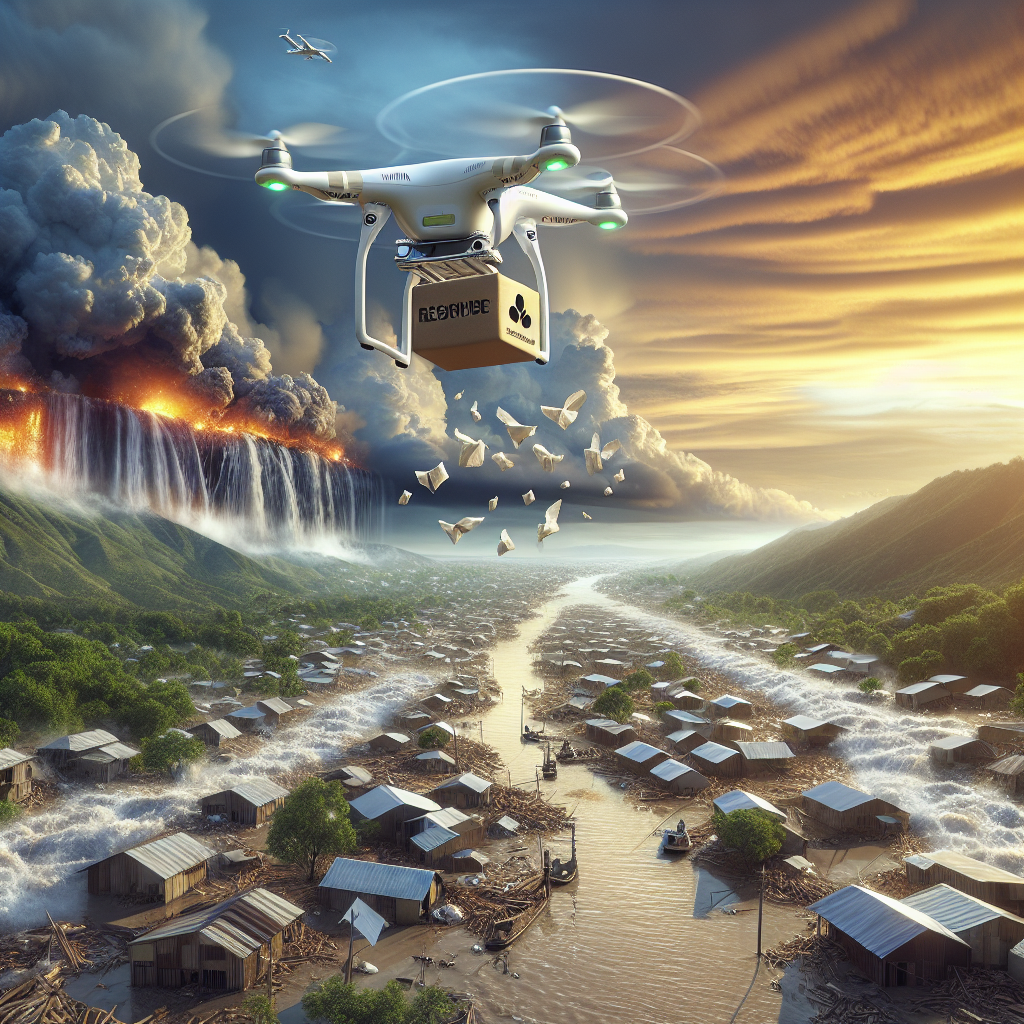AI for Disaster Response: Saving Lives Sustainably
In an era where the frequency and intensity of natural disasters are on the rise due to climate change, the deployment of advanced technologies for disaster response is more crucial than ever. Among these technologies, Artificial Intelligence (AI) stands out as a beacon of hope, offering innovative solutions that can save lives sustainably.
The Role of AI in Disaster Response
AI’s application in disaster response is multifaceted, ranging from prediction and early warning systems to damage assessment and recovery efforts. By leveraging large datasets, AI algorithms can predict natural disasters with a high degree of accuracy, providing valuable time for evacuation and preparation. Post-disaster, AI can analyze satellite imagery to assess damage quickly, prioritize response efforts, and even direct autonomous vehicles and drones to deliver aid to inaccessible areas.
Prediction and Early Warning
AI models are trained on historical weather data, satellite imagery, and environmental sensors to predict natural disasters such as hurricanes, earthquakes, floods, and wildfires. These models can forecast the timing, intensity, and impact area of these events, enabling early warnings and proactive measures. For instance, AI systems like Google’s Flood Forecasting Initiative have been instrumental in providing accurate flood forecasts, saving countless lives in vulnerable regions.
Damage Assessment and Recovery
After a disaster strikes, one of the biggest challenges is assessing the extent of the damage and prioritizing response efforts. AI, through machine learning and computer vision, can analyze aerial and satellite images to quickly identify damaged infrastructure, such as roads, bridges, and buildings. This rapid assessment allows responders to allocate resources more effectively and ensure that aid reaches those in dire need promptly.
Search and Rescue Operations
AI-driven robots and drones are revolutionizing search and rescue operations by accessing areas that are too risky for human teams. Equipped with sensors and cameras, these machines can sift through rubble, detect heat signatures, and identify survivors in real-time. This not only accelerates the search process but also reduces the risk to rescue personnel.
Sustainable Disaster Response
Sustainability is a critical aspect of AI in disaster response. By optimizing resource allocation and reducing the need for large-scale human intervention, AI minimizes environmental impact and ensures a more efficient use of aid. Additionally, AI systems can be deployed repeatedly without the fatigue and resource depletion associated with traditional response efforts.
Challenges and Ethical Considerations
While AI offers transformative potential for disaster response, it also raises significant challenges and ethical considerations. Data privacy, bias in AI algorithms, and the digital divide are among the key concerns. Ensuring that AI systems are transparent, accountable, and accessible to all communities, especially the most vulnerable, is essential for their ethical deployment in disaster scenarios.
Looking Ahead
The future of disaster response lies in the integration of AI with other emerging technologies such as Internet of Things (IoT) devices, blockchain, and 5G networks. This convergence will enable more sophisticated predictive models, real-time data sharing, and even more efficient and targeted response strategies.
FAQs
How does AI predict natural disasters?
AI predicts natural disasters by analyzing vast amounts of data from satellites, weather stations, and environmental sensors. Machine learning algorithms identify patterns and anomalies that precede disasters, providing forecasts and early warnings.
Can AI replace human responders in disaster situations?
While AI can enhance and support disaster response efforts, it cannot replace human responders. The empathy, decision-making, and adaptability of human teams are irreplaceable, especially in complex and rapidly changing scenarios.
Is AI in disaster response expensive?
The initial setup and development of AI systems for disaster response can be costly. However, the long-term benefits, including reduced response times, optimized resource allocation, and minimized environmental impact, can outweigh these costs. Additionally, as AI technology becomes more widespread, its cost is expected to decrease.
How can communities prepare for the integration of AI in disaster response?
Communities can prepare by investing in digital literacy and infrastructure, ensuring equitable access to technology, and fostering partnerships between governments, technology companies, and local organizations. Public awareness campaigns about the benefits and limitations of AI in disaster response can also build trust and cooperation.
What are the ethical considerations in using AI for disaster response?
Ethical considerations include ensuring data privacy, preventing bias in AI algorithms, and making AI-driven disaster response tools accessible to all, regardless of socioeconomic status. Transparent and inclusive policies are essential for addressing these concerns.
Conclusion
AI for disaster response represents a significant leap forward in our ability to predict, prepare for, and recover from natural disasters. By harnessing the power of AI, we can save lives sustainably, minimizing both human and environmental costs. However, realizing this potential requires careful attention to the ethical and practical challenges of integrating AI into disaster response efforts. With a collaborative and inclusive approach, AI can become a cornerstone of future disaster response strategies, making our communities more resilient in the face of increasing climate threats.

